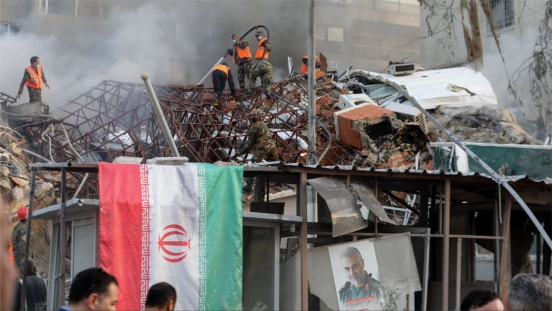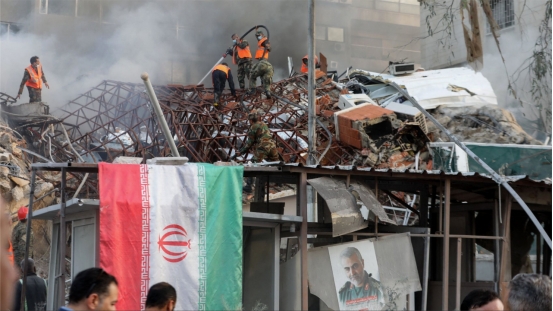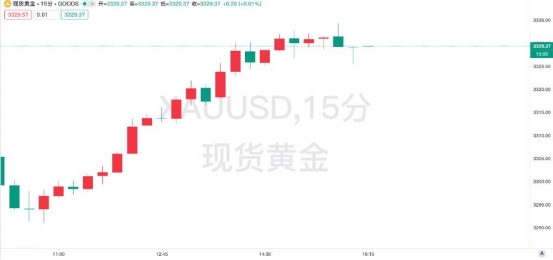Iran nuclear crisis escalates! Israel's "military countdown" triggers gold risk aversion
- 2025年5月26日
- Posted by: Macro Global Markets
- Category: News


In the early morning of May 23, Iranian Foreign Minister Araghchi used harsh words in a letter to UN Secretary-General Guterres: "If Israel dares to attack Iran's nuclear facilities, the United States will be regarded as a 'co-aggressor' and Iran will take 'special measures' to protect its nuclear assets." This statement forms a double deterrent with the "devastating counterattack" statement issued by the Iranian Revolutionary Guard on the same day.
The core conflict of the incident:
Israel's military preparations: US intelligence shows that Israel has completed air exercises targeting Iran's Natanz nuclear facility and has mobilized its Jericho-3 ballistic missile force to a state of combat readiness. Israeli Prime Minister Benjamin Netanyahu hinted at a press conference on the Gaza issue on the 22nd: "Unilateral action will be taken if necessary."
Risk of breakdown in US-Iran negotiations: Although the fifth round of US-Iran nuclear negotiations was held in Rome on the 23rd, the two sides had sharply opposing positions - the United States demanded that Iran "completely stop uranium enrichment", while Iran insisted that "the peaceful use of nuclear energy is a sovereign right." Iran’s Supreme Leader Khamenei bluntly stated on the 20th: “Negotiations with the United States will not produce any results.”
Three major signals of escalating geopolitical risks:
Oil channel crisis: Iran’s Revolutionary Guard announced on the 23rd that it would deploy the “Persian Gulf Eye” anti-ship missile system in the Strait of Hormuz, 20% of the world’s oil transportation is at risk of interruption. Brent crude futures jumped 3.2% to $89.4 a barrel.
Proxy war linkage: Lebanon's Hezbollah launched rockets into northern Israel on the 23rd as a show of support for Iran. The Israel Defense Forces then launched air strikes on the southern suburbs of Beirut, and the conflict showed signs of "multi-point outbreak".
The international community is divided: The European Union announced on the 23rd that it would impose the 12th round of sanctions on Iran, but China and Russia clearly opposed unilateral sanctions. The Chinese Foreign Ministry called for "resolving differences through dialogue" and launched an evacuation plan for its citizens in Iraq.
2. Gold market: Geopolitical risk premium and de-dollarization resonate
1. The “explosive release” of short-term risk aversion
The Iranian nuclear crisis directly triggered a surge in demand for gold as a safe haven: global gold ETF holdings increased by 5.8 tons per day to 1,097.6 tons, the largest increase in May. China's gold imports reached 92 tons in April, increasing to 2,294 tons for six consecutive months, highlighting the acceleration of "de-dollarization". On the technological front, gold broke through the key resistance of $3,300, and a golden cross of MACD was formed on the daily level. The next target is $3,345 (the high on May 22).

Data from the World Gold Council shows that global central banks purchased 244 tons of gold in the first quarter of 2025, and countries such as China, India and Saudi Arabia accelerated the diversification of their gold reserves. According to the Goldman Sachs model, global "de-dollarization" contributes 120 tons of gold demand each year. If the US sovereign credit rating is further downgraded, the gold price may soar to US$4,500 per ounce.
3. Risk Warning
Data shock: If the US PCE price index (expected to be 4.6%) exceeds expectations at 20:30 on May 23, expectations for a Fed rate cut will cool, and gold prices will come under short-term pressure.
Diplomatic variables: The Vatican will mediate the Iran-Israel talks on the 24th. If a ceasefire agreement is unexpectedly reached, gold prices may give up 40% of today's gains.
The Iranian nuclear crisis has exposed the essential conflict in the Middle East's geopolitical landscape - a zero-sum game of territorial and energy interests.
